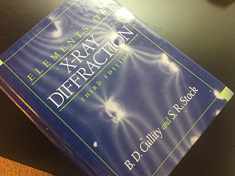
Scanning Electron Microscopy and X-Ray Microanalysis: Third Edition
ISBN-13:
9780306472923
ISBN-10:
0306472929
Edition:
3rd
Author:
Joseph Goldstein, Charles E. Lyman, Dale E. Newbury, Patrick Echlin, David C. Joy, Eric Lifshin, Linda Sawyer, J.R. Michael
Publication date:
2003
Publisher:
Springer
Format:
Hardcover
708 pages
Category:
Electrical & Electronics
,
Engineering
,
Electron Microscopy
,
Physics
,
Microscopy
,
Nanotechnology
,
Technology
FREE US shipping
Book details
ISBN-13:
9780306472923
ISBN-10:
0306472929
Edition:
3rd
Author:
Joseph Goldstein, Charles E. Lyman, Dale E. Newbury, Patrick Echlin, David C. Joy, Eric Lifshin, Linda Sawyer, J.R. Michael
Publication date:
2003
Publisher:
Springer
Format:
Hardcover
708 pages
Category:
Electrical & Electronics
,
Engineering
,
Electron Microscopy
,
Physics
,
Microscopy
,
Nanotechnology
,
Technology
Summary
Scanning Electron Microscopy and X-Ray Microanalysis: Third Edition (ISBN-13: 9780306472923 and ISBN-10: 0306472929), written by authors
Joseph Goldstein, Charles E. Lyman, Dale E. Newbury, Patrick Echlin, David C. Joy, Eric Lifshin, Linda Sawyer, J.R. Michael, was published by Springer in 2003.
With an overall rating of 4.4 stars, it's a notable title among other
Electrical & Electronics
(Engineering, Electron Microscopy, Physics, Microscopy, Nanotechnology, Technology) books. You can easily purchase or rent Scanning Electron Microscopy and X-Ray Microanalysis: Third Edition (Hardcover) from BooksRun,
along with many other new and used
Electrical & Electronics
books
and textbooks.
And, if you're looking to sell your copy, our current buyback offer is $4.95.
Description
This text provides students as well as practitioners with a comprehensive introduction to the field of scanning electron microscopy (SEM) and X-ray microanalysis. The authors emphasize the practical aspects of the techniques described. Topics discussed include user-controlled functions of scanning electron microscopes and x-ray spectrometers and the use of x-rays for qualitative and quantitative analysis. Separate chapters cover SEM sample preparation methods for hard materials, polymers, and biological specimens. In addition techniques for the elimination of charging in non-conducting specimens are detailed.


We would LOVE it if you could help us and other readers by reviewing the book
Book review

Congratulations! We have received your book review.
{user}
{createdAt}
by {truncated_author}



